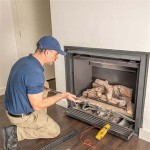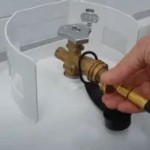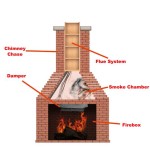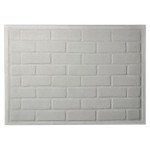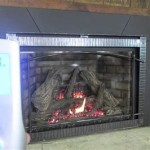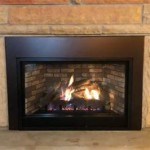Fireside Gas Fireplaces: A Comprehensive Overview
Fireside gas fireplaces represent a popular heating solution combining aesthetic appeal with practical functionality. These appliances offer a convenient alternative to traditional wood-burning fireplaces, eliminating the need for wood storage and the associated mess. Instead, they utilize natural gas or propane to generate heat and create a visually appealing flame. This article provides a comprehensive overview of Fireside gas fireplaces, exploring their features, benefits, types, installation considerations, safety aspects, and maintenance requirements.
The rising popularity of gas fireplaces stems from their ease of use and efficiency. Unlike wood-burning options, gas fireplaces can be ignited with the flick of a switch or the push of a button, often including remote control capabilities for enhanced convenience. They also offer precise temperature control, allowing users to regulate the heat output according to their needs. This combination of convenience and control contributes to their broad appeal across various demographics and living spaces.
Understanding the Advantages of Fireside Gas Fireplaces
Fireside gas fireplaces offer several distinct advantages over traditional wood-burning fireplaces and other heating methods. These advantages contribute to their growing prevalence in modern homes.
Convenience and Ease of Use: The primary advantage is the unparalleled convenience they offer. Starting a gas fireplace is significantly simpler than building a wood fire, requiring no physical effort like gathering wood, arranging logs, or tending to the flames. Many models feature electronic ignition systems and remote controls, enabling users to ignite and adjust the flame from the comfort of their seating area. This eliminates the need for constant monitoring and adjustments, providing a hassle-free heating experience.
Efficiency and Cost-Effectiveness: Gas fireplaces can be surprisingly efficient, particularly direct-vent models. These closed-combustion systems draw combustion air from outside and vent exhaust gases directly outside, minimizing heat loss and maximizing heat output into the room. This design can lead to significant energy savings compared to traditional fireplaces, where a considerable amount of heat escapes up the chimney. While the initial cost of a gas fireplace might be higher, the long-term operational costs can be lower due to improved efficiency and the elimination of firewood costs.
Cleanliness and Environmental Impact: Gas fireplaces are significantly cleaner than wood-burning fireplaces. They produce significantly less smoke, soot, and ash, contributing to cleaner indoor air quality and reduced environmental pollution. The combustion process in a modern gas fireplace is more complete, resulting in lower emissions of harmful pollutants. This makes them a more environmentally friendly heating option, especially in areas with strict air quality regulations. Furthermore, the absence of ash and soot eliminates the need for regular cleaning and disposal of wood-burning residue.
Aesthetic Appeal and Design Versatility: Fireside gas fireplaces are available in a wide variety of styles and designs to complement any home décor. From traditional designs that mimic the look of a wood-burning fireplace to sleek, modern designs with linear flames and decorative glass, there is a gas fireplace to suit every taste. They can be installed in existing fireplaces or as freestanding units, offering flexibility in placement and integration into the living space. The visual appeal of a flickering flame creates a cozy and inviting atmosphere, enhancing the ambiance of any room.
Exploring Different Types of Fireside Gas Fireplaces
The market offers a variety of Fireside gas fireplace types, each with its own characteristics and installation requirements. Understanding these differences is crucial for selecting the most suitable option for a particular application.
Direct-Vent Gas Fireplaces: Direct-vent fireplaces are sealed combustion systems that draw air from outside for combustion and vent exhaust gases directly outside through a sealed vent pipe. This design ensures that no room air is used for combustion, preventing drafts and maximizing heating efficiency. Direct-vent fireplaces are considered the safest and most efficient type of gas fireplace, making them a popular choice for modern homes. They can be vented horizontally through an exterior wall or vertically through the roof.
Vent-Free Gas Fireplaces: Vent-free gas fireplaces, also known as ventless fireplaces, do not require a chimney or vent. They burn gas efficiently and release the combustion products directly into the room. While convenient to install due to the absence of venting requirements, vent-free fireplaces require careful consideration of safety and air quality. They are equipped with oxygen depletion sensors (ODS) that shut off the gas supply if oxygen levels in the room become too low. However, proper ventilation is still essential to prevent the buildup of carbon monoxide and other pollutants. Many jurisdictions have restrictions or outright bans on vent-free gas fireplaces due to safety concerns.
B-Vent Gas Fireplaces: B-Vent fireplaces, also referred to as natural vent fireplaces, utilize a chimney or existing flue for venting exhaust gases. They draw combustion air from inside the room. While they offer a more traditional look and feel, B-Vent fireplaces are less efficient than direct-vent models due to heat loss through the chimney. They also require a properly functioning chimney for safe and effective venting.
Gas Fireplace Inserts: Gas fireplace inserts are designed to be installed into existing wood-burning fireplaces. They offer a convenient way to convert an inefficient wood-burning fireplace into a more efficient and user-friendly gas fireplace. Inserts are available in direct-vent, B-vent, and vent-free options, allowing homeowners to choose the best option based on their needs and existing chimney configuration.
Installation, Safety, and Maintenance Considerations
Proper installation, adherence to safety guidelines, and regular maintenance are crucial for ensuring the safe and efficient operation of a Fireside gas fireplace.
Professional Installation: Gas fireplace installation should always be performed by a qualified and licensed professional. Improper installation can lead to gas leaks, carbon monoxide poisoning, and other serious hazards. A professional installer will ensure that the fireplace is properly connected to the gas supply, vented correctly, and meets all applicable building codes and safety regulations.
Carbon Monoxide Detection: Carbon monoxide (CO) is a colorless, odorless, and deadly gas that can be produced by incomplete combustion. It is essential to install carbon monoxide detectors in the home, particularly near sleeping areas, to provide early warning of CO buildup. Regularly test the CO detectors to ensure they are functioning properly. If a CO detector alarm sounds, evacuate the premises immediately and contact the fire department or emergency services.
Regular Maintenance: Regular maintenance is vital for ensuring the safe and efficient operation of a gas fireplace. This includes cleaning the burner assembly, pilot light, and venting system. Inspect the unit for any signs of damage or wear, such as cracks in the glass, loose connections, or deterioration of the venting system. A qualified technician should inspect and service the fireplace annually to ensure it is functioning properly and safely. The frequency of cleaning depends on the usage and local environmental conditions.
Safety Precautions: Always follow the manufacturer's instructions for operating and maintaining the gas fireplace. Never use flammable liquids to start or accelerate the fire. Keep combustible materials, such as furniture, drapes, and paper, away from the fireplace. Supervise children and pets when the fireplace is in operation. Ensure that the room is adequately ventilated, especially when using a vent-free gas fireplace. Never block or obstruct the venting system. Understanding and adhering to safety precautions is paramount for the well-being of the occupants.
In conclusion, Fireside gas fireplaces offer a compelling combination of convenience, efficiency, aesthetic appeal, and safety when properly installed and maintained. The selection of an appropriate model should be based on individual needs, existing home infrastructure, and adherence to local building codes and safety regulations. Consulting with a qualified professional is highly recommended to ensure a safe and effective installation. While offering significant advantages over traditional wood-burning fireplaces, gas fireplaces require responsible operation and regular maintenance to ensure long-term performance and safety.

Heatilator Heirloom Gas Fireplace Fireside Hearth Home

Outdoor Lifestyles Courtyard Gas Fireplace Fireside Hearth Home

Heat Glo 6k Series Gas Fireplace Fireside Hearth Home

Heat Glo Supreme Gas Insert Fireside Hearth Home

Heat Glo Cerona Gas Fireplace Fireside Hearth And Leisure

Fireside Hearth Home Your Fireplace Experts

U44 Urbana Traditional Gas Fireplace Capo Fireside
Outdoor Fireside Grand Oak Log Set Fireplaces Com

Fireside Finishings Malone Wood Mantel Hearth Home

Courtyard 36 Ventless Fireplace Premier Grilling
Related Posts

